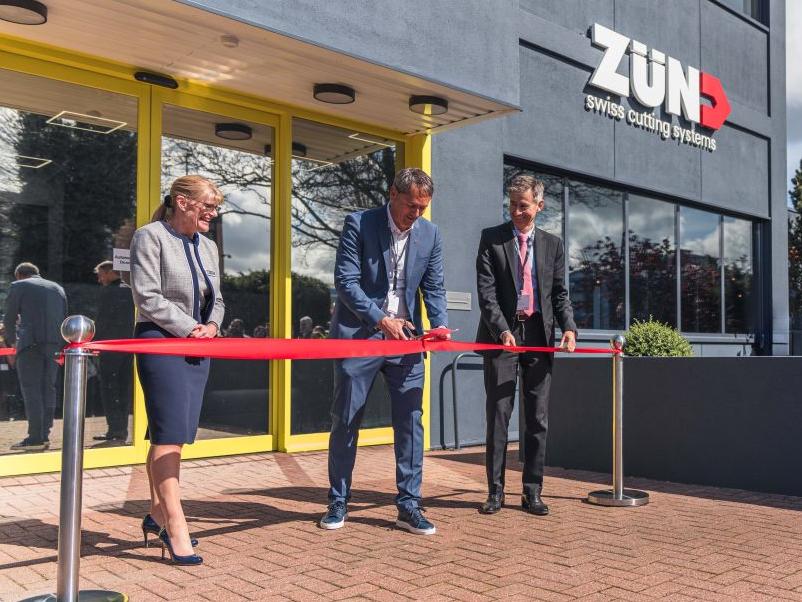Parts that pioneer innovation

From concept through production, Alpine Advanced Materials strives to deliver perfect parts made from advanced materials that are engineered to withstand the harshest environments. Company president, Roger Raley reveals more.
Alpine Advanced Materials is a leading expert in the design and manufacture of purpose-built parts and products for the world’s most demanding aerospace, defence, energy, space, and outdoor applications. The company commercialises high-performance materials originally developed and qualified by top defence contractors, including its flagship HX5™ military aviation-grade thermoplastic nanocomposite.
Q) Please provide the latest news regarding your HX5 military aviation-grade thermoplastic nanocomposite?

Over the last several months, we’ve expanded our understanding of how HX5 handles. We completed Electromagnetic Interference (EMI) testing and found HX5 had exceptional attenuation, thus providing effective EMI shielding. It was also shown in additional third-party testing to retain up to 96% of its original mechanical performance when subjected to 5 million rads of gamma radiation. Most recently, samples of HX5 coated with an antimicrobial clearcoat showed a 99.93% reduction in Staphylococcus aureus, and a 99.92% reduction in E. coli.
Q) What areas of the aircraft is HX5 most suitable for?
HX5 was engineered to replace machined aerospace-grade aluminium at half the weight. With a high strength-to-weight ratio, thermal stability, environmental resistance, and manufacturing flexibility, it can be injection moulded, formed, extruded, or machined like aluminium, allowing component manufacturers to make complex but strong shapes. For aerospace, HX5 is ideal for cabin interiors and non-structural areas – electronic enclosures, seats, galleys, lavatories, drawer slides, and decorative hardware. Pretty much anything non-structural that is currently made of metal is a good fit for conversion to HX5. Every gram counts when it comes to cutting weight.
Q) What benefits do HX5 parts offer over and above traditional offerings?
Parts made with HX5 are lighter than metal, corrosion resistant, and highly manufacturable. This superior handling means parts will be less expensive, produce less waste, and have shorter production lead times than metal. Compared to parts made with plastic, HX5 components are stronger and provide a higher level of UV protection for the antimicrobial technologies that we’ve seen widely proliferate throughout the pandemic.
Q) Are there any customer success stories you can relate to?

One current example is drawer slides for aircraft, which are significantly lighter and equally as strong as their metal predecessors, providing the same look and feel as traditional drawer slides at a fraction of the weight. Another area we’ve enjoyed recent success with is in the defence space with electronic enclosures and camera housings. Again, these have been lighter, provided a higher level of anti-corrosion, and been impervious to some of the more toxic chemicals that parts are exposed to, like aviation fuel, solvents, and lubricants. Lastly, we have several high-end sporting goods projects in the marine and firearm industries where lightweighting and anti-corrosion are important as well as aesthetics. This is where the ability to apply high-temp coatings to HX5 is a differentiator.
Q) How easy was it to get your HX5 product through all the stringent and rigorous testing and accreditation procedures to certify it for flying aircraft?
This has probably been our biggest hurdle. Over the course of its development, testing, and validation by the Department of Defense, which spanned a decade and amounted to an R&D investment in excess of $50 million, HX5 passed flame, smoke, and toxicity requirements, as well as many other tests, meeting or exceeding existing regulations. However, once metal parts are initially converted to HX5, getting those individual components certified has been time-consuming and laborious.
Q) What have you been doing to get through the pandemic crisis?
We’ve weathered the pandemic extremely well, and haven’t had to take any extreme actions. Before Covid hit, 2020 was shaping to be a critical growth year for us, and we were able to both manage that and continue to add where needed. Our biggest challenge was that commercial aerospace was cash constrained and internally focused, but that allowed us to pivot and focus more effort on defence and space, as well as high-end recreation. Covid essentially forced us to more quickly diversify the business, which also paved the way for us to add 30% more people to our team.
Q) What particular aspect has helped your company get through the pandemic?
There are a couple of things that have really worked for us – patience and adaptability. We recognised that there were uncontrollable elements because of the pandemic and worked to control what we could. We managed our business prudently and continued to adapt, innovating to find new ways to connect with customers. Because clients still wanted to engage, we quickly moved to virtual and kept that forward momentum.
Q) Do you think companies should be using this pandemic enforced downtime to effectively ‘reset’ and look at how efficiently they are running their businesses?
Yes, absolutely. You should always look at how you’re running your business, both in good times and in bad. In good times, you can accelerate growth with resources and capital to advance the business. In down times, you want to protect your business, and more importantly, your employees, which are your biggest asset. For aerospace businesses, the slowdown presented an opportunity to look at innovation and how to modernise, to find ways to focus on reducing emissions and fuelling green initiatives.
Q) Are there any positives in general to come out of all this?
For Alpine, the positive has been the validation and fulfilment of our corporate culture’s core values of perseverance, innovation, adaptability, and disruption. As a team, we grew closer navigating an incredibly challenging time together. When you look at the broader industry though, I’ve been a bit disappointed at the missed opportunities to more closely explore how to modernise from a technology standpoint. Instead, I saw more conservatism and protecting of cash.
Q) What kind of industry landscape will we be faced with when everything gets back to normal?
“Getting back to normal” in terms of production rates for commercial aircraft won’t happen until 2023, which also goes for airline capacities. Airlines are going to have to be even more consumer-friendly. As more people return to flying, it’s going to be because they feel safe on an aircraft. In the struggle to capture the returning base, airlines need to protect flyers’ personal space, make sure aircraft are clean, and tailor for a better passenger experience. Long-haul travel will be affected by things like vaccine passports and new international standards.
Q) Price, quality and on-time delivery are all givens, but what else do you see as important to serving your customers these days?
Responsiveness. Our customers need us to help them innovate, they need us to be experts, and they need us to be responsive to them and their needs. This has helped us edge out supplier competition. We’ve also gained a leg up by building a robust engineering team to become a one-stop shop for parts, from concept to production. As a result, our clients can significantly consolidate their supply base, and we can extend our ability to maintain that responsiveness throughout the process.
Q) What differentiates your company from the competition?
We truly are a one-stop shop when it comes to engineering better parts, whereas our competitors may not offer end-to-end services. Secondly, we’re extremely flexible in how we built the business and empower our team to make decisions. We’re structured so we can respond without the bulky bureaucracy and hierarchy that might hinder customers who want and are ready to innovate and move fast. One of our strengths is that we’ve shown we are a willing and agile partner.
Q) Where to next for your company?
Definitely growth. Alpine is going to continue to broaden our vertical market reach, and continue to introduce new materials, both for existing customers and additional markets. This will also be coupled with geographical growth. A lot of what we’re doing right now is primarily in North America, but we have new opportunities coming from overseas, particularly Europe. As the world increasingly focuses on the carbon footprint of heavy industries like aerospace, we’re excited at the part HX5 will play in helping get there.








